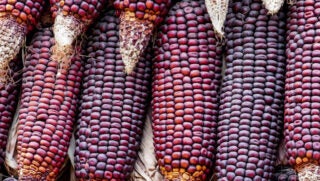A University of Nebraska-Lincoln research team has set how to see how an integrated system, which overlays cattle grazing with existing crop production systems, can help new and young farmers get started in agriculture.
The team, which includes members of a new Nebraska Beef Systems Research Initiative, will also investigate how the integration of livestock and crop production systems can increase output per acre and reduce greenhouse gas emissions associated with production. The team also plans to examine the benefits of using cover crops retained for livestock forage.
James C. MacDonald, associate professor of animal science and ruminant nutrition at Nebraska, will lead the team in its investigation of various outputs including yields, soil health and greenhouse gas emissions, as well as the economic feasibility of adopting these new practices.
“It’s very difficult for new or young farmers to get started,” MacDonald said. “You may not own the land or need to work with a family member’s existing system to start your own enterprise. Integrating cattle without disturbing crop production with minimal investment can help young producers get started and stay in agriculture.”
The availability of perennial forage for livestock production has decreased as farms move to less diversified systems to grow individual crops. Highly specialized systems, such as monoculture, may be less sustainable than diversified approaches in terms of resource efficiency and long-term profitability.
“Cover crops are a long-term investment to improve soil health and reduce erosion, but they can be difficult for producers to pay for,” MacDonald said. “If producers can graze cattle on cover crops, they could increase land efficiency and mitigate costs.”
Producers will play a vital role in the research by participating in surveys and focus groups to gather input about how they make decisions. Outcomes of this study will help farmers and ranchers understand which practices will help reduce greenhouse gas emissions while efficiently producing food in a diversified system.
U.S. Rep. Don Bacon, who represents Nebraska’s 2nd District, said: “As a member of the House Agriculture Committee, I know how important it is for producers to maximize livestock production and increase overall productivity. Nebraska is the number one state for beef and veal exports and for commercial red meat production. This grant will allow the University of Nebraska-Lincoln to contribute to the state’s cattle production and research effective land use practices to help new farmers.”
The project is funded by a $1 million grant from the Foundation for Food and Agriculture Research.


